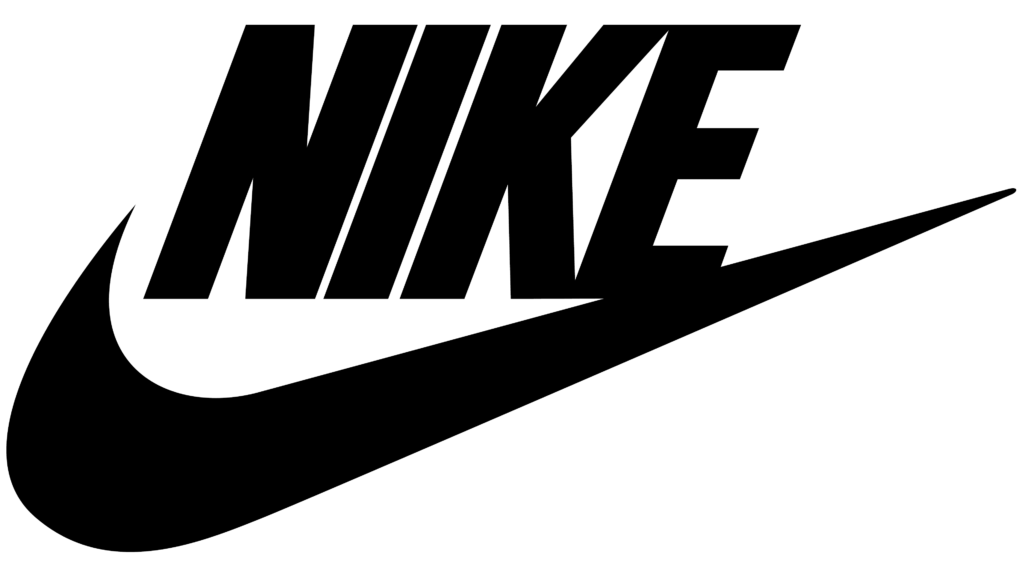This Article has been revised, edited and added to, by Poulomi Chakraborty.
- Comparing Static and Interactive Email Content
- Creating Engaging Interactive Content
- Types of Interactive Content for Email Campaigns
- Implementing Interactive Content: Best Practices
- Successful Use of Interactive Content in Email Campaigns
- The Future of Interactive Content in Email Marketing
- Measuring the Success of Interactive Email Campaigns
- Overcoming Challenges in Implementing Interactive Email Content
- Conclusion
In the crowded space of digital marketing, making your emails stand out can be challenging. Traditional emails often get lost in the sea of promotional messages, but there’s a way to capture attention and engage your audience more effectively—interactive content. Interactive content in email campaigns transforms passive reading into active participation, creating a richer and more engaging experience for your subscribers. This approach not only boosts engagement but also helps drive conversions, making your email marketing efforts more fruitful. In this article, we’ll explore the power of interactive content in email campaigns, the benefits it offers, and how you can implement it to achieve better results.
Comparing Static and Interactive Email Content

Understanding the impact of interactive content starts with comparing it to traditional static email content. This comparison highlights the differences in engagement and effectiveness, illustrating why interactive content is becoming a game-changer in email marketing.
Static Email Content
Traditional static emails consist of text, images, and links. These elements are essential for conveying information and guiding readers to take action. However, static emails are limited in their ability to engage recipients deeply. They rely on the reader’s willingness to follow through on calls to action, such as clicking a link to visit a website.
Consider a typical promotional email from an online retailer. The email might feature images of new products, a brief description, and a “Shop Now” button. While this format can be effective, it doesn’t encourage the recipient to interact with the content beyond clicking a link. The engagement is one-dimensional, focusing solely on the click-through rate.
Interactive Email Content
Interactive emails, on the other hand, invite recipients to engage with the content directly within the email. This can include elements like image carousels, quizzes, polls, surveys, and even embedded videos.
Interactive content turns the email from a passive reading experience into an active one, where the recipient is encouraged to participate and interact.
For example, imagine an online retailer sending an interactive email featuring a product quiz. The quiz asks recipients questions about their preferences and style, providing personalized product recommendations based on their answers.
This not only makes the email more engaging but also provides value to the recipient by helping them discover products tailored to their tastes.
Comparing Engagement Levels
The key difference between static and interactive emails is the level of engagement they generate. Static emails often see lower engagement rates because they don’t offer much beyond the initial click. Recipients might skim through the content and decide whether or not to click the link, but there’s little opportunity for deeper interaction.
Interactive emails, however, keep recipients engaged for longer periods. By including interactive elements, these emails encourage recipients to spend more time engaging with the content. This increased engagement can lead to higher conversion rates, as recipients are more likely to take action after interacting with the email.
Benefits of Higher Engagement
Higher engagement levels translate into several benefits for email marketers. First, they improve the overall effectiveness of email campaigns. When recipients interact with the content, they’re more likely to remember the brand and its message. This leads to increased brand awareness and loyalty.
Second, interactive emails can provide valuable insights into recipient preferences and behaviors. By analyzing how recipients interact with different elements, marketers can gather data that helps refine future campaigns.
For example, if a significant number of recipients engage with a product quiz, this indicates an interest in personalized recommendations, which can inform future content strategies.
Finally, higher engagement levels can lead to better deliverability rates. Email service providers often use engagement metrics to determine whether emails should be delivered to the primary inbox or the spam folder. Emails with higher engagement rates are more likely to reach the primary inbox, ensuring that your messages are seen by your audience.
Creating Engaging Interactive Content
Now that we understand the advantages of interactive email content, let’s explore how to create it. Implementing interactive elements requires a thoughtful approach to design and user experience. Here are some key strategies for creating engaging interactive content for your email campaigns.
Understanding Your Audience
The first step in creating interactive content is understanding your audience. Knowing what your recipients value and how they prefer to engage with content is crucial. This understanding allows you to design interactive elements that resonate with your audience and encourage participation.
For example, if your audience consists of young professionals interested in technology, an interactive email featuring a tech quiz or an augmented reality experience might be highly engaging. On the other hand, if your audience is primarily parents looking for educational resources, an email with interactive tips and advice might be more effective.
Designing Interactive Elements
Designing interactive elements involves creativity and a focus on user experience. The goal is to make the interactive content intuitive and enjoyable for recipients. Some common types of interactive elements include:
- Image Carousels: These allow recipients to swipe through multiple images within the email. This can be used to showcase a range of products or different features of a single product.
- Quizzes and Polls: Quizzes and polls engage recipients by asking them questions and providing instant feedback or results. This can be a fun way to learn about recipient preferences and provide personalized recommendations.
- Surveys: Surveys gather valuable feedback from recipients. They can be used to understand customer satisfaction, gather opinions on new products, or learn about recipient interests.
- Videos: Embedding videos in emails can increase engagement significantly. Videos can be used to showcase product demos, share customer testimonials, or provide educational content.
Ensuring Mobile Compatibility
With a significant number of recipients accessing emails on mobile devices, ensuring that your interactive content is mobile-friendly is essential. Interactive elements should be designed to work seamlessly on both desktop and mobile devices. This includes optimizing images for quick loading, ensuring touch-friendly navigation, and testing emails on various devices and email clients.
Measuring and Optimizing Engagement
Once you’ve created and sent your interactive emails, it’s important to measure engagement and optimize your strategy based on the results. Key metrics to track include open rates, click-through rates, time spent interacting with the email, and conversion rates. Analyzing these metrics helps you understand what works and what doesn’t, allowing you to refine your approach and improve future campaigns.
Types of Interactive Content for Email Campaigns

Interactive content can take many forms, each offering unique ways to engage recipients and drive action. By incorporating a variety of interactive elements into your email campaigns, you can create a dynamic and engaging experience for your audience. Let’s explore some of the most effective types of interactive content that you can use to enhance your email marketing efforts.
Image Carousels and Sliders
Image carousels and sliders allow recipients to browse through multiple images within the email itself. This is particularly useful for showcasing a range of products, different features of a single product, or visual storytelling.
For instance, a fashion retailer might use an image carousel to display different outfits from a new collection, allowing recipients to swipe through and see each item in detail. This not only captures attention but also provides a richer visual experience compared to static images.
Quizzes and Polls
Quizzes and polls are excellent tools for engaging recipients and gathering valuable insights. By asking recipients questions and providing instant feedback or results, quizzes and polls create a fun and interactive experience. For example, a beauty brand might include a quiz to help recipients find the best skincare products for their skin type.
After answering a few questions, recipients receive personalized product recommendations, making the email both engaging and useful. Polls can be used to gather opinions on new products, understand customer preferences, or collect feedback on past purchases.
Surveys and Feedback Forms
Surveys and feedback forms are powerful tools for collecting detailed information from your audience. These interactive elements encourage recipients to share their thoughts, preferences, and experiences, providing you with valuable data to improve your products and services.
For instance, a travel agency might include a survey in their email asking customers about their recent travel experiences and what destinations they would like to visit next. The insights gathered from these surveys can inform future marketing campaigns and help tailor offers to meet customer needs.
Embedded Videos
Videos are a highly engaging form of content that can capture attention and convey information effectively. Embedding videos in your emails allows recipients to watch content directly within the email, reducing friction and increasing engagement.
For example, a fitness brand might include a workout video demonstrating exercises that can be done at home. This provides immediate value to the recipient and encourages them to engage with the content. Videos can also be used to showcase product demos, share customer testimonials, or provide educational content.
Interactive Infographics
Interactive infographics combine visual appeal with interactivity, making complex information more digestible and engaging. These infographics can include clickable elements, animations, and hover effects that reveal additional information.
For instance, a tech company might use an interactive infographic to explain how their new software works, with each section of the infographic providing more details when clicked. This not only makes the content more engaging but also helps recipients understand and retain the information better.
Countdown Timers
Countdown timers create a sense of urgency and encourage recipients to take immediate action. These timers can be used to highlight limited-time offers, upcoming events, or the end of a sale.
For example, an e-commerce store might include a countdown timer in their email promoting a flash sale, showing the time remaining until the sale ends. This visual representation of urgency can drive higher click-through rates and conversions.
Interactive Maps
Interactive maps are particularly useful for businesses with physical locations or those promoting events in various locations. These maps allow recipients to explore different locations, find directions, and learn more about each site.
For example, a restaurant chain might include an interactive map in their email, allowing recipients to find the nearest location and view the menu for each restaurant. This not only enhances the user experience but also makes it easier for recipients to visit a location or attend an event.
Gamification
Gamification involves incorporating game-like elements into your emails to make the experience more engaging and fun. This can include challenges, rewards, and interactive games that encourage recipients to participate.
For instance, a retail brand might create a holiday-themed email campaign with an interactive game where recipients can “unwrap” virtual gifts to reveal special discounts or prizes. This approach not only captures attention but also increases the likelihood of recipients engaging with the email and taking action.
Implementing Interactive Content: Best Practices

Successfully incorporating interactive content into your email campaigns requires careful planning and execution. By following best practices, you can ensure that your interactive elements enhance the user experience and drive desired outcomes.
Know Your Audience
Understanding your audience is the foundation of any successful email campaign. Conduct research to identify your recipients’ preferences, behaviors, and pain points. Use this information to design interactive content that resonates with your audience and addresses their needs.
For example, if your audience is primarily young professionals, consider incorporating interactive elements that are visually appealing and provide quick, actionable insights.
Prioritize User Experience
The success of interactive content hinges on providing a seamless and enjoyable user experience. Ensure that your interactive elements are intuitive and easy to use. Test your emails on various devices and email clients to ensure compatibility and smooth functionality.
For example, if you’re using an image carousel, make sure it works seamlessly on both desktop and mobile devices, with touch-friendly navigation for mobile users.
Keep It Relevant
Interactive content should add value to the recipient and align with the overall goal of your email campaign. Avoid adding interactive elements just for the sake of it. Instead, focus on creating content that enhances the message and encourages meaningful engagement.
For instance, if you’re promoting a new product, an interactive quiz that helps recipients determine which product best suits their needs can be highly relevant and valuable.
Measure Engagement
Track and analyze the performance of your interactive emails to understand what works and what doesn’t. Key metrics to monitor include open rates, click-through rates, time spent interacting with the email, and conversion rates.
Use these insights to optimize your interactive content and improve future campaigns. For example, if you notice that recipients are highly engaged with video content, consider incorporating more videos in your emails.
Iterate and Improve
Interactive email marketing is an ongoing process that requires continuous testing and refinement. Experiment with different types of interactive content and gather feedback from your audience. Use this feedback to iterate and improve your approach, ensuring that your emails remain engaging and effective over time.

Successful Use of Interactive Content in Email Campaigns
To truly understand the power of interactive content in email campaigns, it’s helpful to look at real-world examples. Several brands have successfully harnessed interactive content to engage their audiences, boost conversions, and enhance the overall customer experience. Let’s explore some of these case studies to see how different types of interactive content can be implemented effectively.
Nestlé’s Interactive Recipe Emails

Nestlé, a global food and beverage company, used interactive emails to engage their audience by offering value beyond their products. In one campaign, they sent out emails featuring interactive recipe cards. These cards allowed recipients to click on different ingredients to see recipe suggestions and nutritional information.
Results: The interactive elements encouraged recipients to spend more time engaging with the email, leading to higher click-through rates. By providing useful and relevant content, Nestlé was able to strengthen their relationship with customers and position themselves as a trusted resource for culinary inspiration.
Sephora’s Interactive Quizzes

Sephora, a leading beauty retailer, incorporated interactive quizzes into their email campaigns to provide personalized product recommendations. For instance, they created a skincare quiz that asked recipients about their skin type, concerns, and routine. Based on the responses, Sephora provided tailored product suggestions directly within the email.
Results: The quiz not only engaged recipients but also helped Sephora gather valuable data about their customers’ preferences and needs. This led to increased sales and customer satisfaction, as recipients felt that the recommendations were highly relevant and personalized.
Airbnb’s Interactive Maps

Airbnb, a popular online marketplace for lodging and experiences, used interactive maps in their emails to enhance the user experience. In one campaign, they included a map that allowed recipients to explore different destinations and view available accommodations. Recipients could click on various locations to see detailed information and book their stay directly from the email.
Results: The interactive map made it easier for recipients to find and book accommodations, leading to higher engagement and conversion rates. The visual and interactive nature of the map also made the email more appealing and user-friendly.
Dell’s Product Launch Emails

Dell, a leading technology company, used interactive emails to showcase their new products in a dynamic and engaging way. In one campaign, they included an image carousel that allowed recipients to swipe through different product images and specifications. Additionally, they embedded a video demonstrating the features and benefits of the new product.
Results: The interactive elements captured recipients’ attention and provided a richer experience compared to traditional static emails. This approach led to higher open and click-through rates, as well as increased interest in the new product.
Nike’s Gamified Emails

Nike, a global sportswear brand, leveraged gamification in their email campaigns to create a fun and engaging experience for their audience. In a holiday campaign, they included an interactive game where recipients could “unwrap” virtual gifts to reveal special discounts and prizes. The game was designed to be simple and enjoyable, encouraging recipients to participate and engage with the brand.
Results: The gamified email campaign generated high levels of engagement and excitement among recipients. The interactive and playful nature of the email encouraged more clicks and conversions, as recipients were eager to see what prizes they could win.
The Future of Interactive Content in Email Marketing
The success of interactive content in email campaigns highlights its potential to transform how brands communicate with their audiences. As technology continues to evolve, the possibilities for interactive email content will expand, offering even more opportunities for engagement and personalization.
Let’s explore some trends and innovations that are likely to shape the future of interactive email marketing.
AI-Powered Personalization
Artificial intelligence (AI) is set to revolutionize interactive email content by enabling even more precise and dynamic personalization. AI can analyze vast amounts of data to understand individual preferences and behaviors, allowing marketers to create highly tailored and relevant content.
For example, AI can power real-time product recommendations within an email based on a recipient’s browsing history and past purchases, making the content feel uniquely personalized.
Augmented Reality (AR)
Augmented reality (AR) is an emerging technology that can bring interactive email content to life. By integrating AR elements into emails, brands can offer immersive experiences that go beyond traditional interactions.
For instance, a furniture retailer could include an AR feature in their email that allows recipients to visualize how a piece of furniture would look in their home using their smartphone camera. This level of interactivity can enhance the shopping experience and drive higher engagement and sales.
Interactive Storytelling
Interactive storytelling combines narrative elements with interactive features to create compelling and engaging emails. This approach can be particularly effective for brands looking to convey complex information or tell a story that resonates with their audience.
For example, a nonprofit organization might use interactive storytelling in their emails to share the impact of their work, allowing recipients to explore different aspects of their initiatives through clickable elements and embedded videos.
Real-Time Interactivity
Advancements in email technology are making it possible to include real-time interactivity in emails. This means that the content within an email can change based on real-time data, such as inventory levels, current promotions, or live events.
For instance, an airline might send an email with real-time flight updates and availability, allowing recipients to book flights directly from the email with the most up-to-date information. This level of immediacy can enhance the user experience and drive quicker decision-making.
Enhanced Data Collection and Privacy
As interactive content becomes more sophisticated, the need for enhanced data collection and privacy measures will grow. Brands will need to balance the benefits of interactive content with the responsibility of protecting user data and ensuring compliance with privacy regulations.
Implementing transparent data practices and providing clear options for recipients to manage their preferences will be essential for building trust and maintaining a positive relationship with your audience.
Measuring the Success of Interactive Email Campaigns

To fully harness the power of interactive content in email campaigns, it’s crucial to measure their success accurately. This involves analyzing various metrics to understand how recipients are engaging with the content and to identify areas for improvement.
Key Metrics for Interactive Emails
When evaluating the performance of interactive emails, several key metrics can provide valuable insights. Open rates are the first indicator of success, showing how many recipients are interested enough to open the email.
However, for interactive content, the click-through rate (CTR) becomes even more significant as it measures the level of engagement with the interactive elements. Analyzing CTR helps determine which interactive features are most effective in capturing attention and driving action.
Another important metric is the time spent on the email. Interactive content tends to keep recipients engaged for longer periods. By tracking how long recipients interact with the email, you can gauge the effectiveness of the interactive elements in maintaining their interest.
Additionally, conversion rates indicate the ultimate success of your campaign by showing how many recipients took the desired action, such as making a purchase or signing up for an event.
Understanding Engagement Patterns
Beyond these basic metrics, it’s essential to delve deeper into understanding engagement patterns. This involves looking at which interactive elements receive the most interaction.
For instance, if a quiz within the email has a high participation rate, it indicates strong engagement and interest. Similarly, tracking the performance of embedded videos, image carousels, and other interactive features can reveal what resonates most with your audience.
It’s also useful to segment your audience based on their interactions. By identifying groups of recipients who engage differently, you can tailor future emails to better meet their preferences.
For example, a segment that frequently interacts with product recommendations might benefit from more personalized content, while those engaging with informational videos might prefer educational emails.
A/B Testing for Continuous Improvement
A/B testing is a valuable strategy for optimizing interactive email campaigns. By testing different versions of an email, you can determine which elements are most effective.
For instance, you might test two versions of an interactive email—one with an embedded video and another with an image carousel. Comparing the engagement metrics for each version can provide insights into which type of content is more appealing to your audience.
Additionally, A/B testing can help refine specific aspects of interactive content. Testing different quiz questions, design layouts, or call-to-action placements can lead to incremental improvements in engagement and conversion rates. Continuous testing and refinement ensure that your interactive emails evolve to meet the changing preferences of your audience.
Analyzing Feedback for Insights
Collecting and analyzing feedback from recipients is another crucial step in measuring the success of interactive email campaigns. Including feedback forms or surveys within your interactive emails allows you to gather direct input from your audience.
Asking recipients about their experience with the interactive elements, their overall satisfaction, and any suggestions for improvement provides valuable qualitative data.
This feedback can be used to make informed decisions about future email campaigns. For example, if recipients express difficulty using certain interactive features on mobile devices, you can focus on improving mobile compatibility. Similarly, if feedback indicates high satisfaction with specific content, you can replicate and expand on those successful elements in future emails.
Leveraging Advanced Analytics
Advanced analytics tools offer deeper insights into the performance of interactive email campaigns. These tools can track complex interactions, such as hover effects, clicks on specific elements, and detailed engagement paths.
By leveraging these insights, marketers can gain a comprehensive understanding of how recipients navigate and interact with their emails.
For example, heatmaps can visualize which parts of the email receive the most attention, helping to identify hotspots of engagement. Path analysis can reveal the sequence of interactions, showing how recipients move through the email and which elements lead to conversions.
Using advanced analytics, marketers can fine-tune their interactive content to enhance user experience and drive better results.
Continuous Learning and Adaptation
Measuring the success of interactive email campaigns is an ongoing process. It requires continuous learning and adaptation based on the insights gathered from various metrics, feedback, and testing. By staying proactive and responsive to the data, marketers can keep their email campaigns fresh, relevant, and highly engaging.
This iterative approach ensures that interactive content remains effective in capturing the attention of recipients and driving meaningful interactions. As technology and audience preferences evolve, maintaining a commitment to continuous improvement will enable marketers to harness the full potential of interactive content in email campaigns.
Overcoming Challenges in Implementing Interactive Email Content

While interactive email content offers significant benefits, implementing it can come with challenges. Addressing these challenges effectively ensures that your interactive campaigns are successful and deliver the desired results.
Ensuring Compatibility Across Devices
One of the primary challenges is ensuring that interactive emails are compatible across various devices and email clients. Recipients use a wide range of devices, including desktops, laptops, tablets, and smartphones, as well as different email clients like Gmail, Outlook, and Apple Mail.
Each platform may render interactive elements differently, leading to inconsistencies in how the content appears and functions.
To overcome this challenge, extensive testing is essential. Marketers should test interactive emails on multiple devices and email clients to ensure that the content displays correctly and functions as intended.
This might involve using email testing tools that simulate different environments or conducting manual tests across various platforms. Additionally, providing fallback options for email clients that do not support certain interactive features ensures that recipients still receive a functional email, even if it is less interactive.
Balancing Interactivity with Load Times
Interactive elements can enhance engagement but may also increase the email’s load time. Large files, such as high-resolution images or embedded videos, can slow down loading, especially on mobile devices with slower internet connections. Balancing interactivity with fast load times is crucial to maintaining a positive user experience.
Optimizing file sizes and using efficient coding techniques can help reduce load times. For instance, using compressed images, lazy loading for videos, and streamlined code ensures that interactive emails load quickly without sacrificing functionality.
Additionally, testing the email’s performance under various network conditions can help identify potential issues and make necessary adjustments.
Maintaining Data Privacy and Security
Interactive emails often require collecting and processing recipient data, such as responses to quizzes or surveys. Ensuring data privacy and security is paramount, especially with stringent regulations like GDPR and CCPA. Marketers must handle data responsibly, transparently, and in compliance with legal requirements.
Implementing robust data protection measures, such as encryption and secure storage, helps safeguard recipient information. Being transparent about data collection practices and providing clear opt-in options for interactive features ensures that recipients are informed and consent to data usage. Regularly reviewing and updating privacy policies and security practices further enhances data protection and builds trust with your audience.
Creating Relevant and Valuable Content
While the technical aspects of implementing interactive emails are important, the content itself must be relevant and valuable to recipients. Interactive features should enhance the email’s message and provide genuine value, rather than being used as gimmicks. Ensuring that the content aligns with recipient interests and needs is essential for engagement and effectiveness.
Understanding your audience through research and data analysis helps tailor interactive content to their preferences. For example, an audience interested in educational content may appreciate interactive tutorials or quizzes that test their knowledge.
Regularly seeking feedback and monitoring engagement metrics also provides insights into what content resonates most, allowing for continuous refinement and improvement.
Managing Costs and Resources
Developing interactive emails can require additional resources, including design, development, and testing. For some businesses, the cost and time investment may be a challenge. Balancing the benefits of interactive content with the available resources is crucial for sustainable implementation.
Prioritizing key interactive elements that offer the most significant impact can help manage costs. For instance, starting with simpler interactive features, such as image carousels or polls, allows marketers to test the waters and gauge audience response before investing in more complex elements.
Leveraging templates and tools designed for interactive emails can also streamline the development process and reduce resource requirements.
Staying Updated with Evolving Technology
The field of interactive email content is continually evolving, with new technologies and trends emerging regularly. Staying updated with these changes is essential for maintaining a competitive edge and ensuring that your interactive emails remain effective and engaging.
Keeping abreast of industry news, attending webinars, and participating in professional networks can provide valuable insights into the latest developments. Regularly experimenting with new interactive elements and techniques allows marketers to stay innovative and adapt to changing audience expectations.
By addressing these challenges thoughtfully and proactively, marketers can successfully implement interactive email content that captivates recipients and drives meaningful engagement. Overcoming these hurdles ensures that your email campaigns harness the full potential of interactivity, delivering exceptional results and enhancing the overall customer experience.
Conclusion
Harnessing the power of interactive content in email campaigns offers a myriad of benefits, from increased engagement and higher conversion rates to richer customer experiences and valuable insights. By incorporating interactive elements such as image carousels, quizzes, surveys, videos, and more, brands can transform their email marketing efforts and stand out in a crowded digital landscape.
Looking ahead, advancements in AI, AR, real-time interactivity, and enhanced data privacy will continue to shape the future of interactive email marketing, providing even more opportunities for innovation and growth. By staying ahead of these trends and embracing the potential of interactive content, businesses can create more engaging, personalized, and effective email campaigns that resonate with their audience and drive success.
Read next
- Pinterest SEO for Travel Blogs and Businesses
- Social Media Signals and SEO for Travel Websites
- How to Use Analytics to Understand Travel Seasonality
- Analyzing User Behavior and its SEO Implications
- Using Funnel Analysis for Better Conversion Rates






















Comments are closed.